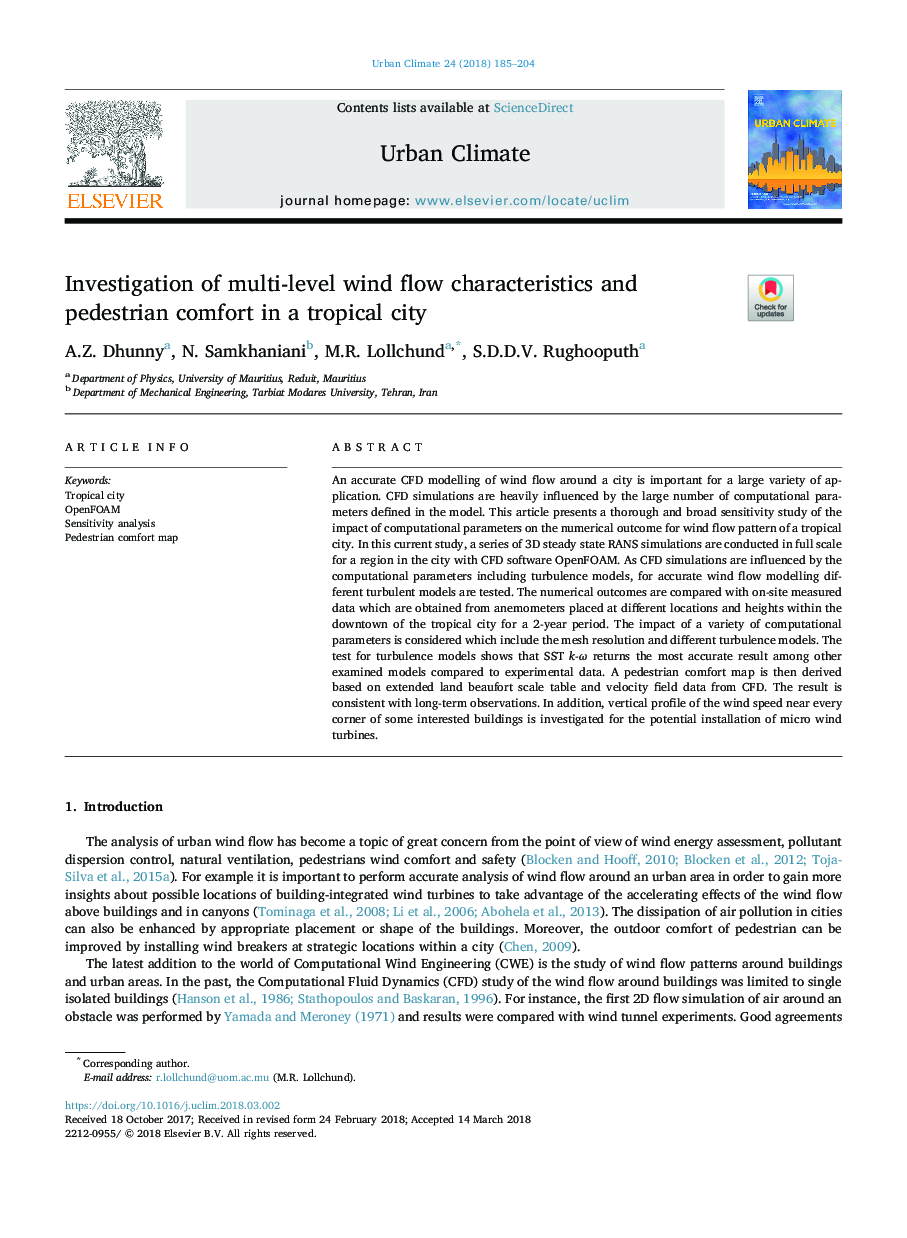| Article ID | Journal | Published Year | Pages | File Type |
|---|---|---|---|---|
| 6576857 | Urban Climate | 2018 | 20 Pages |
Abstract
An accurate CFD modelling of wind flow around a city is important for a large variety of application. CFD simulations are heavily influenced by the large number of computational parameters defined in the model. This article presents a thorough and broad sensitivity study of the impact of computational parameters on the numerical outcome for wind flow pattern of a tropical city. In this current study, a series of 3D steady state RANS simulations are conducted in full scale for a region in the city with CFD software OpenFOAM. As CFD simulations are influenced by the computational parameters including turbulence models, for accurate wind flow modelling different turbulent models are tested. The numerical outcomes are compared with on-site measured data which are obtained from anemometers placed at different locations and heights within the downtown of the tropical city for a 2-year period. The impact of a variety of computational parameters is considered which include the mesh resolution and different turbulence models. The test for turbulence models shows that SST k-Ï returns the most accurate result among other examined models compared to experimental data. A pedestrian comfort map is then derived based on extended land beaufort scale table and velocity field data from CFD. The result is consistent with long-term observations. In addition, vertical profile of the wind speed near every corner of some interested buildings is investigated for the potential installation of micro wind turbines.
Related Topics
Physical Sciences and Engineering
Earth and Planetary Sciences
Earth and Planetary Sciences (General)
Authors
A.Z. Dhunny, N. Samkhaniani, M.R. Lollchund, S.D.D.V. Rughooputh,
